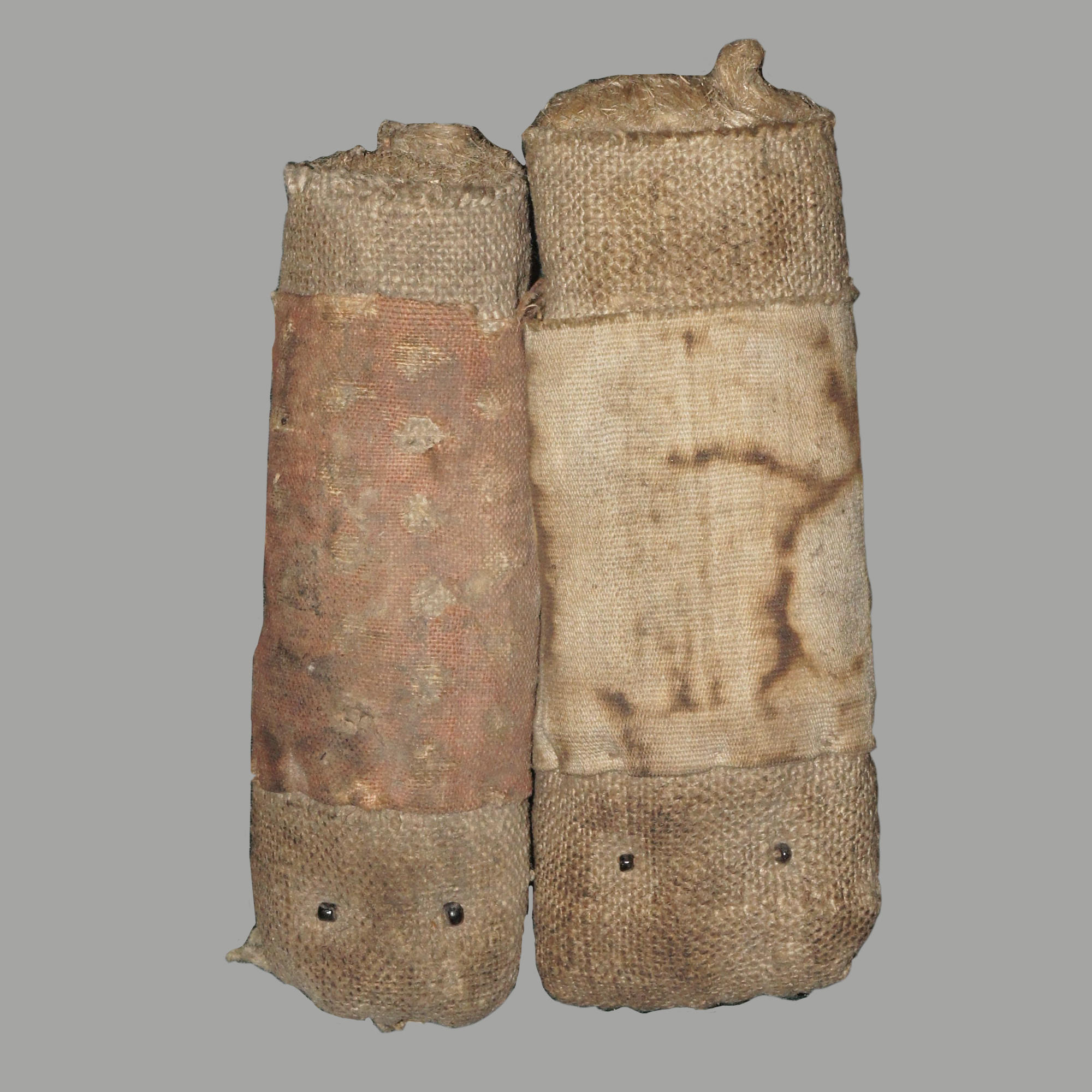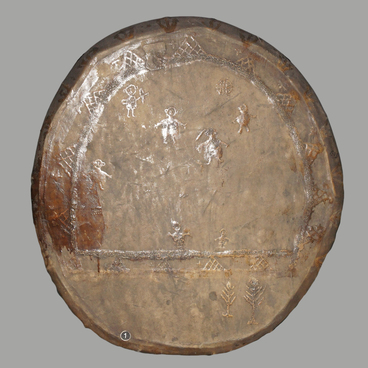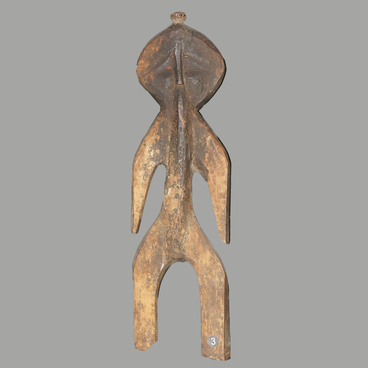Orekenner is a Shorian cult item. It is a paired simplified anthropomorphic image made of kendyr (hemp) fabric in the form of a rectangular pouch stuffed with tow. The face area is marked with a strip of fabric sewn in the middle of the figure. The eyes are marked with sewn beads. One figure is slightly larger than the other.
It was revered among the Shors as a personification of ancestral spirits on the distaff side, the patron of the hearth and family well-being. It was brought to the husband’s house by his young wife. There were both paired and triple orekenners. Double orekenners were also perceived as spouses (man-woman), and triple ones implied the presence of a child.
Orekenners were kept in birch-bark baskets and had a pelt of a small fur-bearing animal laid next to them, which indicates the involvement of these spirits in hunting luck.
Tor-kizhi were varieties of orekenners. Many of them were also paired; they were distinguished by the presence of headwear, clothes from a strip of fabric and often had sewn hands. Among them are both those sewn from soft materials and figures based on wooden stumps sewn into shreds of fabric. The eyes, nose and mouth were marked with beads or thread stitches. A cap or a headband was put on the head of the male figures; female figures were tied with a shawl. These figures were kept in the barn, fed butter and lard; sometimes they were presented with arak. Careless attitude towards them threatened to harm the entire household. In various Shor seoks (clans), veneration of orekenners had its own peculiarities. For example, hunters of the Sor clan (seok) living along the Kondoma River told about the veneration of orekeners’ grandmother-ancestor (‘oreken’ in Shor means an old woman). She was a shaman. Once she decided to make a sacrifice to Ulgen. He was angry with her, for it was forbidden to perform shamanistic rituals to Ulgen. Angry, he sent her to live underground. However, ‘oreken’ the old woman managed to get out from under the ground. Once a year she was treated with gruel of oatmeal and milk. In addition to the milk, she was presented with ‘abyrtka’ (moonshine) once every 6 to 9 years. When shamanistic rituals were performed, the puppets with her image were placed in the front corner of the dwelling on a bench, they were treated and had a pelt of the Siberian weasel placed next to them.
It was revered among the Shors as a personification of ancestral spirits on the distaff side, the patron of the hearth and family well-being. It was brought to the husband’s house by his young wife. There were both paired and triple orekenners. Double orekenners were also perceived as spouses (man-woman), and triple ones implied the presence of a child.
Orekenners were kept in birch-bark baskets and had a pelt of a small fur-bearing animal laid next to them, which indicates the involvement of these spirits in hunting luck.
Tor-kizhi were varieties of orekenners. Many of them were also paired; they were distinguished by the presence of headwear, clothes from a strip of fabric and often had sewn hands. Among them are both those sewn from soft materials and figures based on wooden stumps sewn into shreds of fabric. The eyes, nose and mouth were marked with beads or thread stitches. A cap or a headband was put on the head of the male figures; female figures were tied with a shawl. These figures were kept in the barn, fed butter and lard; sometimes they were presented with arak. Careless attitude towards them threatened to harm the entire household. In various Shor seoks (clans), veneration of orekenners had its own peculiarities. For example, hunters of the Sor clan (seok) living along the Kondoma River told about the veneration of orekeners’ grandmother-ancestor (‘oreken’ in Shor means an old woman). She was a shaman. Once she decided to make a sacrifice to Ulgen. He was angry with her, for it was forbidden to perform shamanistic rituals to Ulgen. Angry, he sent her to live underground. However, ‘oreken’ the old woman managed to get out from under the ground. Once a year she was treated with gruel of oatmeal and milk. In addition to the milk, she was presented with ‘abyrtka’ (moonshine) once every 6 to 9 years. When shamanistic rituals were performed, the puppets with her image were placed in the front corner of the dwelling on a bench, they were treated and had a pelt of the Siberian weasel placed next to them.


